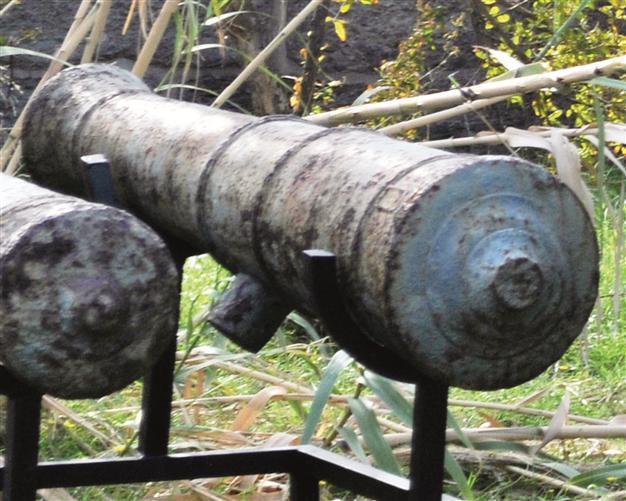Painted cannonballs cause stir in Bodrum
BODRUM - Doğan News Agency

The Bodrum Underwater Archaeology Museum Director Emel Özkan defends herself, saying that the job was a part of annual relief and restoration work in the museum. DHA photo
The walls and the 600-year-old Ottoman cannonballs in the entrance of one of the world’s leading museums, the Bodrum Underwater Archaeology Museum in the Bodrum Castle were revealed to have been painted.
The paint job was carried out under the order of the museum director before President Abdullah Gül came to the district for the 4th Turkish Council Summit.
The Culture and Tourism Ministry opened an investigation concerning the issue and the museum director Emel Özkan testified. Stating the claims were not true, Özkan defended herself saying, “Bodrum Underwater Archaeology Museum does not have a 600-year-old cannonball. The cannonballs in the museum date back to the 19th century and have been painted to prevent corrosion just like the previous years. The original stones and plaster in their structure have never been modified.”
Arrangements in the museum were made for the summit, which was held on June 4 and 5. Within the scope of the arrangements, the walls of the castle were painted with plastic paint and the Ottoman cannonballs were painted with oil paint. The locals of Bodrum and historians responded harshly to the situation. A petition campaign was initiated on a website for Özkan to be discharged from her post with 1,000 people supporting the campaign in two days. The ministry then began the investigation.
Archaeologists were questioned Isparta Museum Director Mustafa Akaslan and historian Nihal Demir carried out a four-day investigation in the Bodrum museum and questioned three archaeologists working for the museum.
One of Turkey’s first archaeologists Oğuz Alpözen, who has served for the Bodrum Underwater Archaeology Museum as a director for 39 years, said the painting of the artifacts in the museum was ugly and meaningless. “Bodrum Castle was visited by previous presidents Kenan Evren and Süleyman Demirel many times. The castle and its vicinity were not closed to visitors for any of these visits. Visitors were not able to enter the castle for two days because of President Gül’s visit. Citizens were even banned from coming close to the castle walls. History received a makeover for Gül’s visit,” he said.
The investigation of Akaslan and Demir reported that before the arrangement, art historian Yasemin Özdemir had warned Özkan about the renovations. Özdemir later learned that despite her warnings, the walls and cannonballs in the museum were painted. “Painting such artifacts with oil paint or other chemicals has damaging effects. These arrangements should not have been made without receiving the opinion of museum experts. The historic cannonballs are entrusted to me and I was not informed about what was done,” Özdemir said.
Özkan, who is a graduate of Ege University Faculty of History of Arts and has been working for the Bursa Underwater Archaeology Museum after serving for the Bursa Turkish and Islamic Works Museum for 20 years, defended herself in a written statement, saying, “The relief and restoration work of the castle was in question last year and its tender was approved by the ministry. The relief is about to be finished and a comprehensive restoration project will begin soon. But since the castle is a museum visited by at least 200,000 people every year, it needs some arrangements annually. Restorations were accelerated before the summit. But the museum administration was unfairly accused by some media groups and a deliberate smear campaign was initiated on the Internet. The cannonballs date back the 19th century and they are displayed in open air. Seven cannonballs needed painting to prevent corrosion and they were painted with oil paint just like the previous years. But the original structure has never been touched.”
